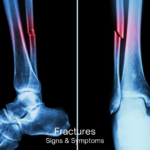Understanding Fainting: Causes, Symptoms, and Management
Fainting, medically known as syncope, is a sudden, temporary loss of consciousness typically resulting from a lack of blood flow to the brain. It is a common phenomenon that affects individuals of all ages and can be triggered by a variety of factors. While often harmless, fainting can sometimes indicate underlying health issues that require medical attention. This article explores the causes, symptoms, diagnosis, and management of fainting.
Causes of Fainting
Fainting can be classified into several types based on its underlying causes:
1. Vasovagal Syncope
Vasovagal syncope is the most common type of fainting and is usually benign. It occurs when the body overreacts to certain triggers, such as emotional stress, pain, or the sight of blood. This overreaction causes a sudden drop in heart rate and blood pressure, leading to reduced blood flow to the brain and subsequent loss of consciousness.
2. Orthostatic Hypotension
Orthostatic hypotension happens when a person stands up too quickly, causing a sudden drop in blood pressure. This type of fainting is more common in older adults and can be triggered by dehydration, prolonged bed rest, or certain medications.
3. Cardiac Syncope
Cardiac syncope is caused by heart-related issues, such as arrhythmias, structural heart disease, or a heart attack. It is a serious condition that requires immediate medical attention, as it can be life-threatening.
4. Neurologic Syncope
Neurologic syncope is associated with neurological conditions like seizures, migraines, or transient ischemic attacks (mini-strokes). This type of fainting is less common but can indicate significant underlying health problems.
5. Situational Syncope
Situational syncope occurs in specific situations, such as during coughing, swallowing, urination, or defecation. These activities can stimulate the vagus nerve, leading to a temporary decrease in blood flow to the brain.
Symptoms of Fainting
Fainting is usually preceded by a set of warning signs, known as pre-syncope symptoms. These symptoms can help individuals recognize and respond to an impending fainting episode:
1. Lightheadedness and Dizziness
A feeling of lightheadedness or dizziness is a common precursor to fainting. This sensation occurs due to a sudden drop in blood pressure and reduced blood flow to the brain.
2. Nausea
Nausea or a feeling of queasiness often accompanies fainting. It is caused by the body’s autonomic nervous system reacting to a perceived threat or stressor.
3. Sweating
Excessive sweating, particularly cold sweats, can be a warning sign of an impending fainting episode. This is another response of the autonomic nervous system.
4. Blurred Vision
A temporary loss or blurring of vision can occur as blood flow to the brain decreases. Some individuals may also experience tunnel vision or see spots.
5. Palpitations
An irregular or rapid heartbeat, known as palpitations, can signal an impending fainting episode. This symptom is often related to cardiac causes of syncope.
6. Weakness
A sudden feeling of weakness or fatigue is common before fainting. The muscles may feel limp, making it difficult to stand or move.
Diagnosing the Cause of Fainting
Determining the underlying cause of fainting is crucial for appropriate management and treatment. A thorough medical evaluation typically includes the following steps:
1. Medical History
A detailed medical history helps identify potential triggers and underlying conditions. The physician will ask about previous fainting episodes, associated symptoms, medications, and any family history of heart disease or fainting.
2. Physical Examination
A physical examination can provide clues about the cause of fainting. The doctor will check blood pressure, heart rate, and perform a neurological examination to assess overall health.
3. Diagnostic Tests
Several diagnostic tests may be used to determine the cause of fainting, including:
- Electrocardiogram (ECG): This test records the electrical activity of the heart and can detect arrhythmias or other heart abnormalities.
- Tilt Table Test: This test involves lying on a table that is tilted to different angles to observe changes in blood pressure and heart rate. It helps diagnose orthostatic hypotension and vasovagal syncope.
- Echocardiogram: An ultrasound of the heart that provides detailed images of heart structures and function.
- Holter Monitor: A portable device worn for 24-48 hours to continuously record heart activity.
- Blood Tests: These can identify underlying conditions such as anemia, dehydration, or electrolyte imbalances.
Managing and Preventing Fainting
The management of fainting depends on its underlying cause. Here are some general strategies and treatments:
1. Immediate Response to Fainting
- Lie Down: If you feel faint, lie down with your legs elevated to increase blood flow to the brain.
- Sit Down: If lying down is not possible, sit with your head between your knees.
- Stay Hydrated: Drink plenty of fluids to maintain blood pressure and prevent dehydration.
2. Lifestyle Changes
- Diet and Hydration: Ensure a balanced diet rich in nutrients and stay hydrated, especially in hot weather or during physical activity.
- Regular Exercise: Engage in regular physical activity to improve cardiovascular health and blood circulation.
- Avoid Triggers: Identify and avoid known triggers, such as prolonged standing, hot environments, or stressful situations.
3. Medications
Medications may be prescribed to manage underlying conditions that cause fainting. These can include drugs to control blood pressure, heart rate, or treat heart conditions.
4. Medical Devices
In some cases, medical devices like pacemakers may be implanted to regulate heart rate and prevent fainting due to cardiac causes.
5. Cognitive Behavioral Therapy (CBT)
For individuals with vasovagal syncope, CBT can help manage the psychological triggers of fainting. This therapy focuses on changing thought patterns and behaviors that contribute to fainting episodes.
When to Seek Medical Attention
While fainting is often harmless, certain situations warrant immediate medical attention:
- Repeated Episodes: Frequent fainting episodes without an apparent cause.
- Cardiac Symptoms: Fainting accompanied by chest pain, shortness of breath, or palpitations.
- Neurological Symptoms: Fainting followed by confusion, difficulty speaking, or loss of movement in limbs.
- Injury: Fainting resulting in a fall or injury.
Conclusion
Fainting is a common yet complex condition with a variety of causes and triggers. Understanding the different types of fainting, recognizing warning signs, and seeking appropriate medical evaluation are essential steps in managing this condition. By adopting healthy lifestyle habits and following medical advice, individuals can reduce the risk of fainting and maintain overall health and wellbeing.





